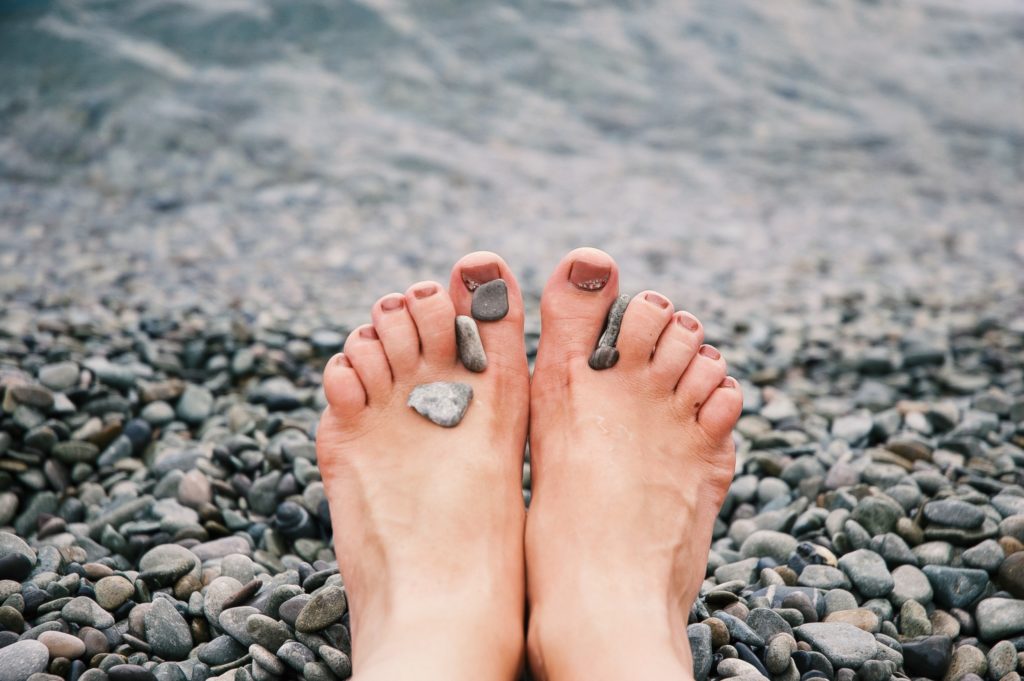Diabetic Foot Health
- Matt Frank
- December 21, 2021
- 1:08 pm
Diabetic Foot Care: More Important Than You Think
You may not think much about your feet — but if you’re living with diabetes you should be checking them every day! Why? Because diabetes can be dangerous to your feet and untreated issues can lead to serious complications. Even the smallest initial injury left unchecked can end in amputation. In fact, Diabetes-related foot problems account for one in five hospital visits for diabetic patients and a whopping 60% of leg and foot amputations not caused by an injury or trauma.
Diabetes can often lead to nerve damage called neuropathy causing a loss of feeling temperature and pain in the legs and feet. The lack of sensation can make it difficult to feel injuries like cuts, sores, blisters, and bruises leaving you vulnerable to infection.
Lack of circulation caused by diabetes can cause slow wound healing — increasing your chance of infection and complication. When left untreated, there is a risk of necrosis and gangrene. In order to stop the spread of gangrene, dead tissue must be surgically removed. In serious cases, amputation is needed.
These issues can be avoided with proper care and routine doctor visits. Follow these guidelines to keep your feet in tip top shape!
Inspect Your Feet Daily
Check your feet daily for cuts, blisters, redness, swelling, nail changes, and other signs of potential problems. Don’t forget to check the bottom of your feet too! Use a hand mirror, magnifying glass, or cell phone camera to help you get a good look.
Beware of Warning Signs
Knowledge is our best defense against illness and injury. Be aware and on the lookout for potential foot problems andneverignore these common warning signs. Contact your doctor immediately if you notice:
Pain and cramping in legs, buttocks, thighs, or calves during physical activity
Increase in swelling of the legs or feet
Changes in skin color or shape, size, and temperature of feet
Burning, tingling, or painful sensations in feet
Lack of feeling, numbness in the toes, or loss in ability to feel temperature
Thickened, yellow, or ingrown toenails
Dry, cracked skin on feet, cracks between toes, calluses
Slow healing blisters, sores, ulcers, infected corns, or bunions
Fungal infections like athlete’s foot between the toes
Loss of hair on toes, feet, or lower legs

Treat Your Feet Well
When you have diabetes, your feet need babying. It’s important to be gentle and diligent.
Bathe your feet daily in lukewarm water to keep them clean. Never use hot water because you can burn yourself without realizing due to neuropathy.
Wash your feet gently with a soft cloth or sponge. Use mild cleansers and avoid antiseptic solutions unless advised by your doctor.
Moisturize the tops and bottoms of your feet daily to prevent skin from getting dry, cracked, and callused. Avoid between the toes to steer clear of fungal infections.
Carefully keep nails trimmed — cut straight across and file down sharp edges to avoid ingrowns. Seek medical help if you can’t do it yourself!
Say NO to at-home treatments and bathroom “surgery”!! If you have corns, calluses, ingrown toenails, or other common foot ailments, visit your doctor for treatment. Never DIY!
Avoid heating pads and hot water bottles as they can burn you. Instead try wearing socks to bed if your feet are cold.
Keep your feet warm and dry as much as possible. Try to keep them out of snow and rain. Wear clean, dry socks, and change them daily — and consider specialty diabetic socks that wick away moisture and avoid cutting off circulation.
Wear well-fitted shoes to avoid blisters. When buying new shoes, try them on at the end of the day when your feet are at their largest — and take your time breaking new shoes in. Don’t forget socks!
Shake out shoes and examine the inside before slipping them on your soles. Foreign objects inside of shoes can cause cuts, blisters, or sores if you’re not able to feel them.
Never walk barefoot! You may not be able to feel that you’ve stepped on something dangerous — leaving you vulnerable to cuts, scratches, and infections.
Take Care of Yourself
The best way to prevent diabetic foot issues is to take good care of yourself. Keep your blood glucose levels under control. Eat well and exercise daily to get your circulation pumping. Avoid smoking and other habits that restrict blood flow. Don’t stand in one position or sit with your legs crossed for extended periods of time. Most importantly — make sure you’re getting regular foot exams! Your doctor should check your feet every time you’re in for a physical. And if you notice any issues, don’t be afraid to make an appointment! Even the smallest injuries heal faster with professional help.
All too often, diabetes comes with foot problems in tow — but it doesn’t have to.The first step is educating yourself on how diabetic foot damage occurs. Then take the steps necessary to protect yourself against injury. Take good care of your feet and yourself to avoid preventable traumas and serious complications.

